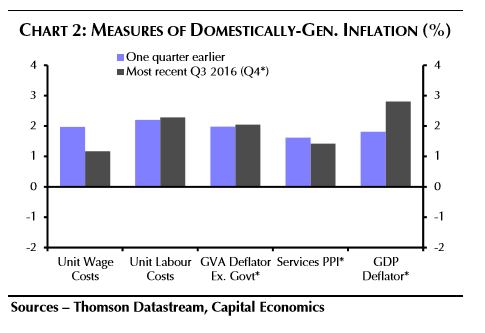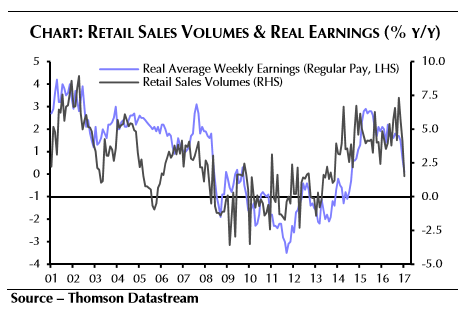The Pound to Australian Dollar Rate Hovers Over Key Support Level, Could Bounce

The GBP/AUD exchange rate is puttering along a range centred on the 1.60s, but the lack of downside momentum as well as the location of the S1 monthly pivot at the 1.5931 lows seems to indicate the possibility of a rebound higher evolving.
Our longer-term technical studies on the pair look for a break above the weekly highs at 1.6236 for confirmation of an upside reversal to a target at the monthly pivot at 1.6330.
However gains above here are unlikely to be given away freely as we believe 1.6330 will act as a formidable obstacle to further gains.

Monthly pivots are based on the previous month’s range and act as levels of support and resistance where experienced traders often fade the dominant trend.
We note that the exchange rate has seen intra-day volatility ease back over recent days which could be suggestive of a big move in coming weeks and potentially a change in direction.
We would speculate the next directional move in GBP/AUD would be higher as we have seen the exchange rate recover off the 1.60 support region back in late 2016.
There is notable buying interest here and this could explain why traders are nervous on selling the Pound too agressively at this stage.
Australian Dollar Outlook: What to Watch this Week
Tuesday, March 21 sees the release of the House Price Index and the Reserve Bank of Australia (RBA) meeting minutes, both at 00.30 GMT.
The House Price index will be useful to gauge whether the Housing market continues its bullish trajectory, especially in the major cities.
If so then rates are unlikely to be lowered by RBA anytime soon and Aussie may catch a bid.
Minutes are unlikely to show changes, although TD Securities see a chance of Dovish tilt due to weak employment and capex data.
“The March statement was a near-copy of February. Perhaps some dovish elements like weak employment composition and disappointing capex survey can introduce some dovish tones,” say TD Securities in a note to clients.
Sterling's Rally Built on Sand?
The Pound rallied following the Bank of England’s (BOE) last meeting because the market had not expected such widespread optimism amongst officials.
Kirsten Forbes, for example, voted for a rate hike and other officials voiced similar thought’s judging from the minutes.
“Other members noted that it would take relatively little further upside news on the prospects for activity or inflation for them to consider that a more immediate reduction in policy support might be warranted,” said the meeting minutes.
But the BOE’s optimism does not reflect recent data, which has actually shown a slight deterioration over the preceding quarter warns to advisory service Capital Economics.
They note how the Purchasing Manager survey data, for example, is showing a GDP growth of only around 0.4% in Q1 against BOE forecasts of 0.6%.
Retail sales have also slowed.
“Early hard evidence such as the surprise dip in retail sales volumes in January, adds to the view that the near-term risks to the MPC’s activity forecasts may be skewed to the downside,” says economist Paul Hollingsworth at Capital Economics.
The imminent triggering of article 50 will officially kick-start the UK's exit of the European Union and usher in a period of uncertainty which is likely to impact on economic growth.
Sterling’s current rally may therefore be built on sand.

The Week Ahead: Inflation Data will be Key
As far as upcoming data releases go, the main release for the Pound is the February CPI due for release on Tuesday, March 21 at 9.30 GMT.
Market expectations for a rise to 1.8% are a little low according to both Capital Economics and TD Securities, who estimate a higher 2.1% and 2.2% rise year-on-year in Feb.
The main contributory factors are likely to be rising food inflation due to the weak Pound and the lagged effect of the rebound in oil prices.
Producer Prices in the UK, out at the same time are expected to show continued extremely high yearly gains in ‘Input prices’ due to the rise in imported component prices because of the weak Pound.
Capital expect Input prices to rise by 21.7% year-on-year.
Manufacturers are not passing the higher costs on, however, as output prices are only rising at a fraction of the level, of 3.5% currently, rising to 3.8% according to Capital.
“Meanwhile, the survey evidence suggests firms have been taking a hit to their margins. Indeed, the output prices balance of the Markit/CIPS survey has not risen by nearly as much as the input price balance. As such, we expect output prices to have increased only a little further, from 3.5% to 3.8%.,” said Holingsworth.

On Tuesday, March 21 at 9.30 Public Borrowing data is released and should show a small 1.0bn rise in February.
Nevertheless, borrowing remains below previous forecasts – down 22% on the previous year allowing the public finances some breathing room.
Given the government’s U-turn on increasing National Insurance contributions from the self-employed and lower-than-expected borrowing, the government does now have a buffer it can use to stimulate the economy in case of a Brexit-related slowdown, factors Sterling’s current rebound may be based on.
The final big news release for the Pound is Retail Sales at 9.30 on Thursday, March 23.
“February’s retail sales figures are likely to suggest that consumer spending is on track for a disappointing first quarter,” said Capital’s Hollingsworth.
He further notes this appears to be as a result of a correlated fall in real earnings growth.

The consensus market estimate is for sales to have risen by 0.4% month-on-month and 2.6% year-on-year, whilst Capital are slightly more optimistic seeing 0.5% and 2.7% rises respectively.
Notwithstanding this slightly brighter forecast the remain pessimistic about the outlook for Retail Sales in Q1.




